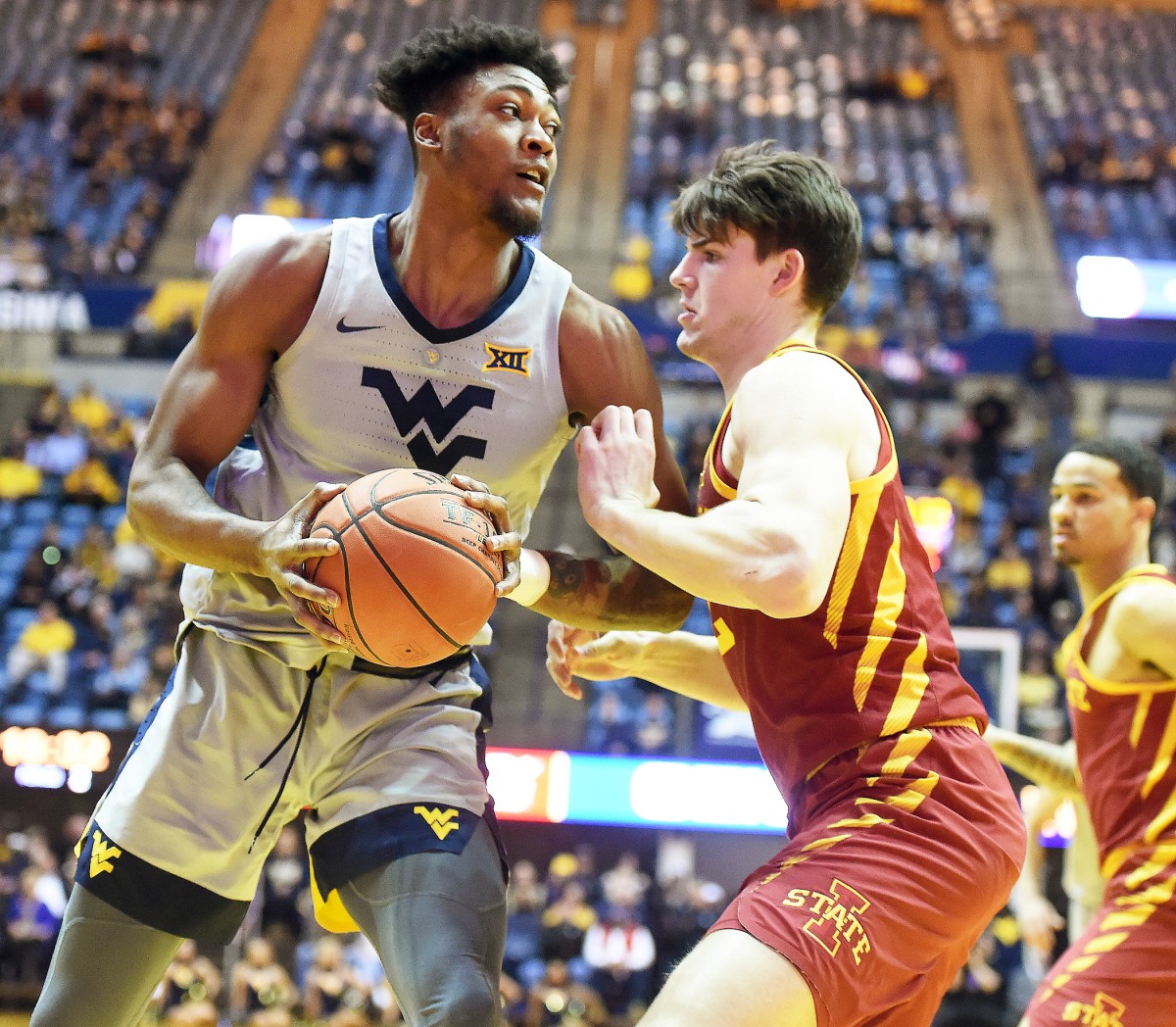KANSAS CITY, Mo. — If the NCAA rules committee is sincere in its efforts to clean up post play in college basketball, West Virginia forward Derek Culver hasn’t noticed it yet.
“Just going off of last year, it was pretty physical, especially once Big 12 play started,” said the 6-foot-10 Culver who averaged 11.5 points and 9.9 rebounds last season as a freshman. “I was getting fouled and going to the line a lot. There was a lot of pushing and shoving going on.”
The rules committee has made adjustments in its point of emphasis in recent years in not allowing such physical play close to the basket.
According to Curtis Shaw, the Big 12 Coordinator of Officials, more changes are in store this season, including not allowing an offensive post player to initiate contact with the defender in order to gain better position on the court.
“In the past, we’ve had plays to where we would say, ‘Let the big guy settle in the post, who can get what, wait till the ball is tried to enter.’ No more,” Shaw said Wednesday during Big 12 media day. “If we’re not going to let the defense play that kind of aggressive, contact plays, we can’t let the offense put them at a disadvantage.”
Shaw has noted many times over the years that post play in college basketball had simply become more of a battle of who lifted the most weights and less about making actual basketball plays.
“I think the post play has gotten so physical and bad, as one coach said, ‘We worried about more time in the weight room than we did learning basketball skills.’ We wanted that out,” Shaw said. “We slowly started to take away the defense being able to displace them, push them, body them out. But in order to do that, now we can’t let the offense be the initiators to pin them down or move them out.”
West Virginia coach Bob Huggins, who is a member of the rules committee, said that all sounds good in theory, but in reality, college basketball post players are 6-foot-10, 280-pound guys and the court is only so big.
“How are you going to clean up post play when you have 6-10, 270-pound guys leaning on each other? There’s going to be contact,” he said. “I think the thing that needs to be called, if (the offensive player) is displaced, you shouldn’t be allowed to do that.
“This thing that we’re going to have a no-contact sport, those people have never played our game. You got 10 big, strong, fast guys in a confined area. There’s going to be some contact.”
And it’s contact that the big men in the sport don’t exactly mind.
“Personally, I think it should stay where it’s at,” Culver said. “Physicality has always been a big part of my game.”
Still, Culver is interested in seeing how games will be called this season and he’s already thought about some adjustments.
“It makes you be smarter with the ball,” he said. “Last year, when I had it down low, I could sort of lean in with my left shoulder and bump, bump, bump.
“This year, I don’t think they’re going to let us do that. I feel like I’ll only be allowed maybe one-and-a-half bumps instead of three or four.”
Having a physical player in Culver in a possibly less-physical game could open the door to him developing his offensive game and help lead the Mountaineers back to the NCAA tournament.
Iowa State coach Steve Prohm and Kansas State coach Bruce Weber both considered Culver as one of the top players to watch in the Big 12 this season.
If Culver is able to take a big step forward, he anticipates getting asked about his NBA prospects, but he’s not ready to discuss it before the season has started.
“I don’t really think about stuff like that until the opportunity presents itself, because anything can be taken away in a heartbeat,” Culver said. “Last year, I could have entered my name just to get feedback, but I didn’t want to take anything away from my team and what we have going on. I honestly think what we have going on this year is going to be special. I’m focused on that.”
TWEET @bigjax3211




